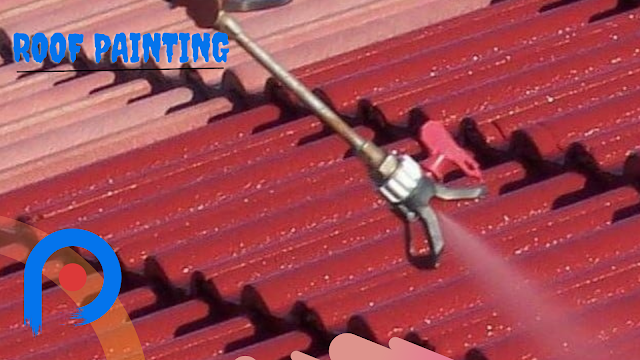In this article let us together learn how to paint METAL surfaces like Roof Painting and other metal painting.
We are a strong advocate of clean and healthy preparation of the paint surface before painting. Proper preparation not only saves resources to the owner but it does ensure the longevity of the surfaces (metal or wood) and the topcoats. Cleaning and applying the right primer does make a lot of difference. Even premium metal primer and paint tend to lose their sheen (Learn Sheen) if proper surface preparation is not accorded. So do clean and prepare thoroughly before you put your hands on the brush and the rollers. Here we have a few ways to paint any metal surface:
Clean Metal surface: The
metal surface should be free from dirt, grease, old paint and rust. Remove all of them with the help of sandpaper,
pressure wash if possible, or some mineral spirits. Cleaning with detergent water
could also help wash some dirt.
Peel off loose or peeling
paint: Old paint that is loose and peeling off should be removed completely. One
can use hand wire brushing, scraping, and sanding (Learn Sanding) techniques for removing old paint.
While sanding with a power tool may be faster, they could polish the metal
surface abrasively giving adhesion problems.
Remove Rust: Rust is one
major issue in metal painting. It affects the adhesion of the paint. So it is
very much important to remove the rust deposit before applying the paint. Sparse
rust on the metal can be cleaned by brushing and sanding. Using a premium primer
on rust affected metal surfaces could bear better results. Painting on a rusted
surface will damage both the surfaces and the paint applied.
Repair holes and dents:
After removing rust, if there are holes and dents on the roof or surface, fix
them to the shape and fill them up with appropriate fillers or sealants. Check with the hardware
or paint shop for the sealant options.
Right Primer: As endorsed
in our previous post, priming (Learn Priming )is one of the most important parts of the painting.
Water-based primers don’t go good on metal surfaces. The primer available in
our market that prevents rust is Iron Oxide. Check for other options that help averts
rusting with the shopkeeper. Apply the primer immediately after surface
preparation. This help to keep away flash rusting (corrosion of wet iron) and accumulation of dust on the surface.








